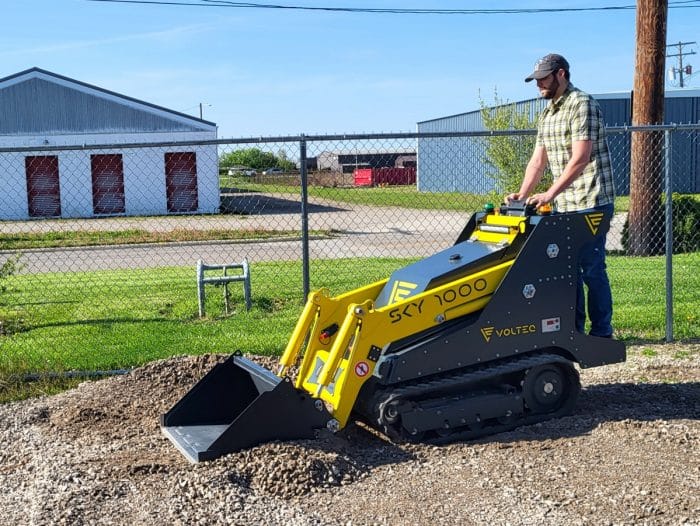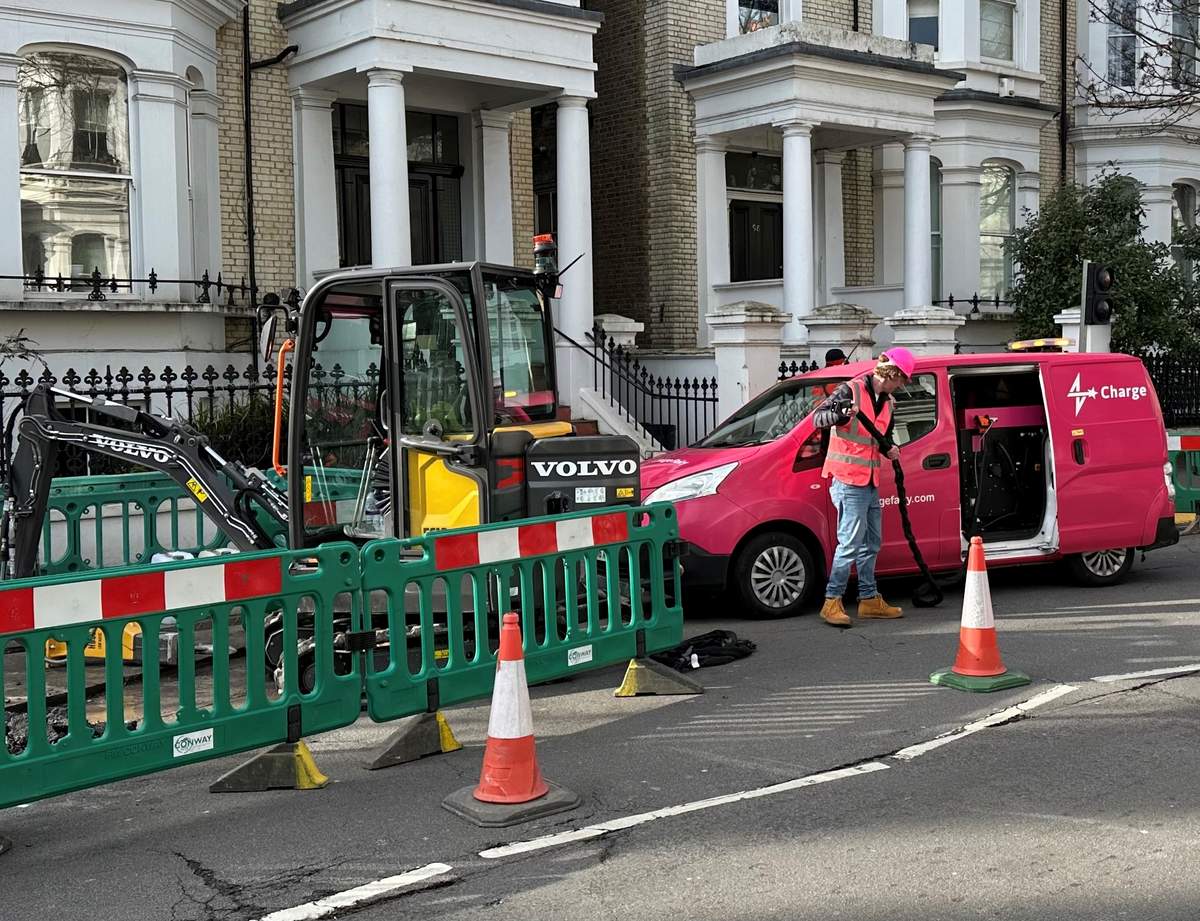Electric Loaders: Let’s Plug into Volteq’s Sky 1000 Electric Stand-On Loader

This article is part of a series on battery-powered compact loaders. In the coming weeks, we will be posting brand-specific stories summarizing the electric loader options from a variety of machine makers, including Volvo, Case, Toro, Volteq and beyond. View those other stories right over here, then enjoy the feature below.
Volteq introduced its Sky 1000 electric mini skid steer prototype in January 2023, followed by the Sky 2000 and CQT 3300 quad-track concept machines at CONEXPO-CON/AGG. Production models of the Sky 1000 shipped to dealers this spring of 2024. Now Volteq Equipment offers the Sky 1000 battery-powered mini skid steer and a wide range of attachments to maximize versatility and utilization on the jobsite. Powerful, yet compact, the Sky 1000 lifts up to 1,000 lbs and can pass through a 36-in. gate. The 20.48-kW lithium-iron battery and engineered efficiency, including direct drive electric track motors and machine programming, deliver strong performance and an impressive eight-hour runtime.
The standout feature of the Sky 1000 is its remote-control capability, allowing operators to have enhanced visibility and control up to 160 ft away. This feature significantly improves efficiency and convenience, especially for tasks requiring precise load placement, such as drilling or concrete breaking. Additionally, the Sky 1000 comes with a 12-month prepaid subscription to telematics, providing insights into machine performance and usage. This feature not only assists owners with theft prevention through location tracking but also streamlines maintenance management by providing error codes, ultimately boosting operational efficiency.
“Volteq Equipment offers the Sky brand of battery-powered compact tool carriers or mini track loaders,” says Mike Slattery, VP of business development at Volteq Equipment. “We have up to an eight-hour run time. We offer built-in chargers, radio remote control, GPS, telematics and a universal mount system compatible with countless attachments. While only 34 in. wide, the Sky 1000 offers a 1,000-lb lift capacity and a 20.48-kWh lithium-iron battery. The Sky 2000 is in development for late 2024 and will offer up to a 50-kW lithium-iron battery and a 2,000-lb lift capacity. As for our dealer network, we are currently operating in 10 states.”
The Sky 1000 is engineless, thus eliminating engine-related systems, such as cooling, fuel and air intake. The result is a substantial reduction in maintenance costs, while minimizing the risk of unplanned downtime events stemming from warned or overlooked maintenance of an engine and related systems. Additionally, the Sky 1000 comes with a 12-month prepaid subscription to telematics, providing insights into machine performance and usage. This feature not only assists owners with theft prevention through location tracking but also streamlines maintenance management by providing error codes, ultimately boosting operational efficiency.
The electrification of the Sky 1000 can save up to 70 percent in operating costs compared to diesel-powered alternatives that lack compelling standard features like radio remote control, telematics and GPS tracking. The lower operating costs contribute significantly to the bottom line, even when compared to lower cost ICE powered products.
Electric loaders, with an average hourly consumption of 2.5 kWh, translate to an operational cost of $0.39 per hour based on current U.S. electricity prices. Over a standard working month, this equates to approximately $62.80, significantly less than the $590 monthly expense for diesel loaders. Then add in maintenance costs. Diesel machines often rack up an additional $5,000 yearly for air filters, oil and larger repairs. Moreover, think about idle time. Running a diesel engine for 45 to 60 minutes daily could consume fuel unnecessarily, making up 10 to 18 percent of total machine hours per year. Electric loaders eliminate this fuel waste, offering further savings and efficiency gains.
“It is really interesting to see who is gravitating toward electric equipment,” says Slattery. “People working indoors are first in line because there are no exhaust emissions and battery-powered machines operate with far lower decibel outputs. Landscaping construction is a strong second, heavily based on the initial idea that quiet operation can mean working earlier or later in the day, thus more billable hours. It also means being more appealing to customers and their neighbors, but operational costs factor in as well. Landscapers, like most customers, have the option to choose gas, diesel or battery power. As they realize how much cost savings can be achieved by eliminating combustion engine maintenance and replacing gas or diesel with electricity, it almost seems too good to be true.”
Advice to Buyers

“When considering purchasing electric-powered machines, it’s crucial to evaluate your specific needs,” says Patrik Psenak, CEO of Volteq. “Can you achieve the required runtime between charges? Ensure charging is convenient and accessible, especially with integrated chargers, which can be plugged into standard 120V outlets. Electric machines consume no energy when the machine is idle but not in use, feature immediate slow speed control and deliver instant torque for better responsiveness and precise, controlled movements. Reduced operating and maintenance costs of electric machines are significantly decreasing the total cost of ownership over time, making them a compelling investment. Additionally with features like minimized vibration, zero emissions, lower noise and remote control, operators can work more safely and efficiently.”
More from Volteq…
Keith Gribbins is publisher of Compact Equipment.




